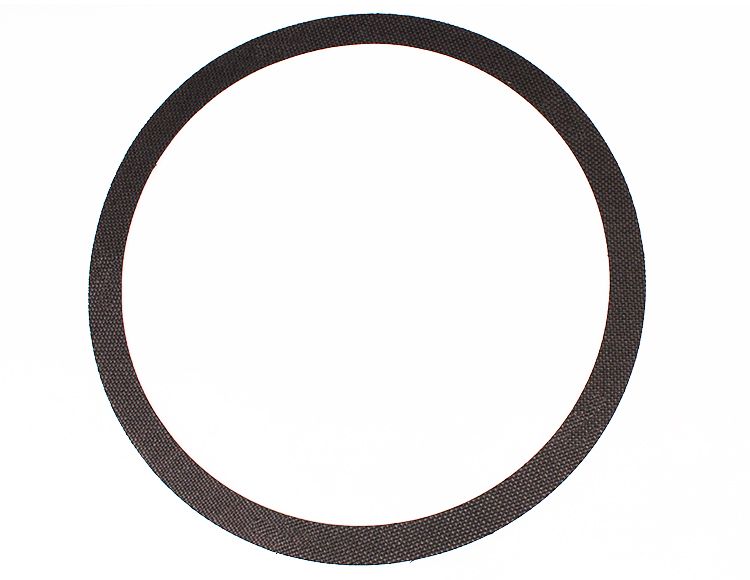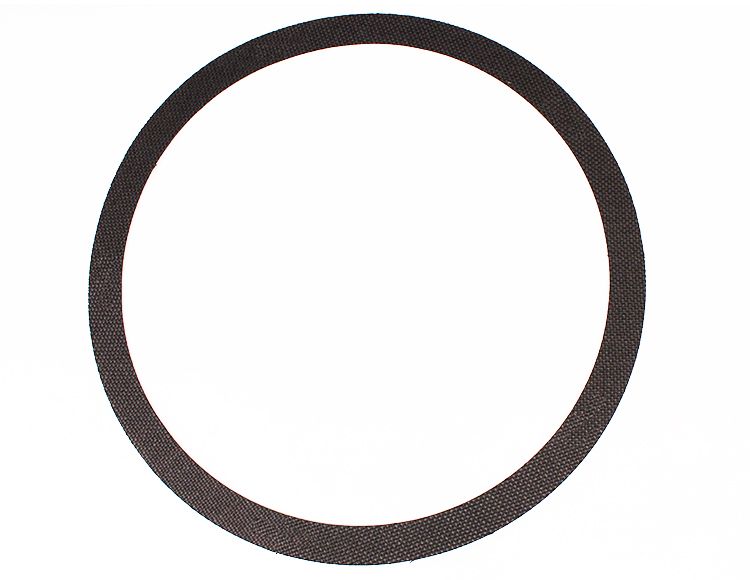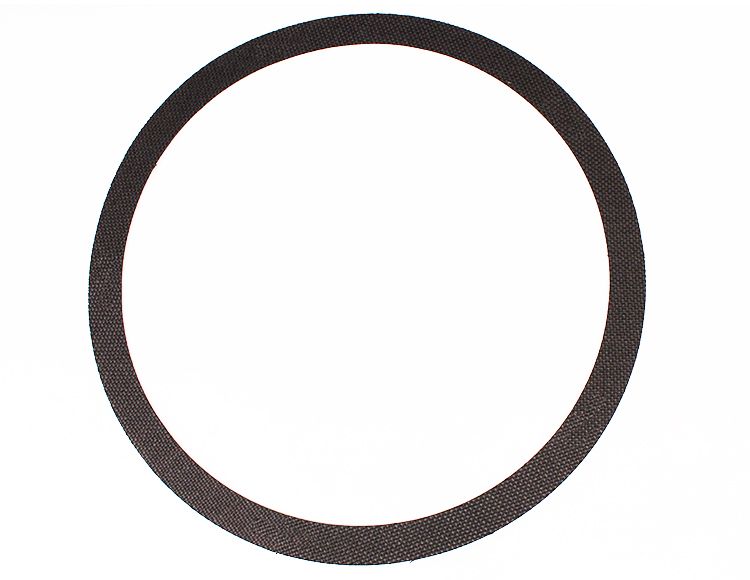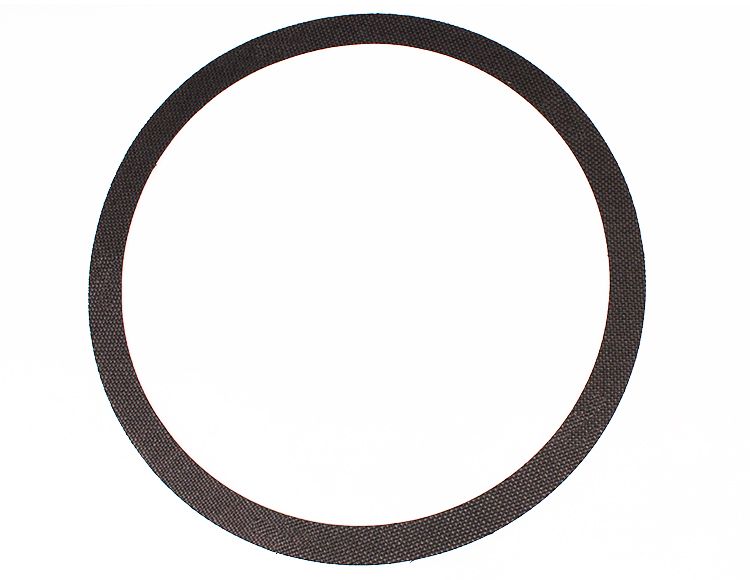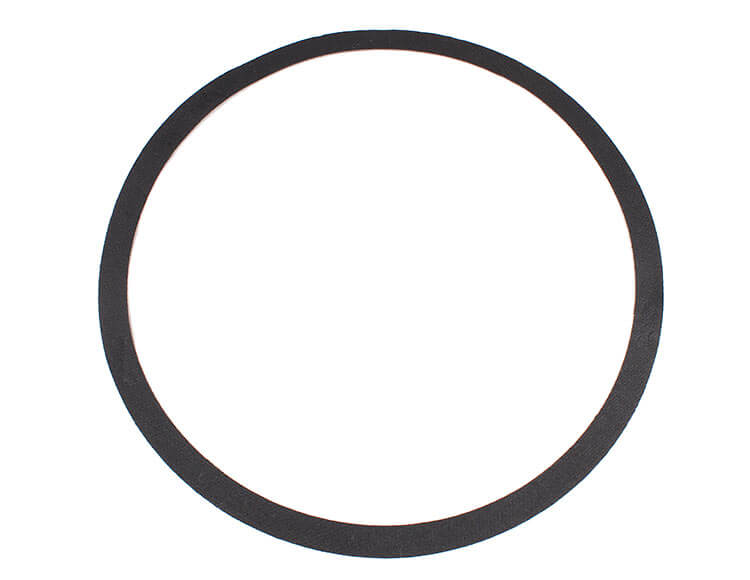Woven Carbon Wear Characteristics
Lowell Caltrell
Complaint
Customer was driving 55 MPH, saw an RPM flare and the lockup was no longer holding. There also was a growling noise when it tried to lockup. When the converter was cut open, there was fine, black, graphite-looking material on the stator assembly.
In our converter shop, a large number of 300mm converter pistons with woven carbon linings are coming in with the friction material worn down to the metal. The lining on these pistons acts much like a thrust washer: as it wears, the converter end clearance increases.
How many times has a converter with a woven clutch worn down to the metal come into your shop? It might be your competitor's rebuilt converter, an OE unit or one of your own units. On inspection, the unit looks pretty good. The O-ring, piston bore and turbine hub are fine. The unit seems mechanically sound, but the lining is gone or, in some cases, worn down to almost nothing Figure 1.
 |
 |
Does what you see in the converter match up with the customer complaint? In most cases you might reason that the transmission is at fault and that the wear is due to a lack of apply pressure. However, by examining the various stages of breakdown of this material, we can find a more likely cause of failure.
If you catch this problem before the lining is completely gone, you can find fine black particles in the oil because woven carbon material does not wear like paper linings. In fact, it can be compared to a brake pad, as the more it is applied the thinner it gets. We have seen this situation regardless of the manufacturer of the converter.
The wear pattern starts at the outside diameter because the piston is dished. On inspection of used piston linings, we have recorded the lining thickness as low as .005" on one side of the piston and .015" in other areas of the same piston. In the lower right quadrant of the piston shown in Figure 2, the lining is only .005" thick, although the lower center section is obviously thicker.
Figure 3 shows the next stage in the breakdown process. The piston was taken out of an OE unit that had never been rebuilt. Figure 4 ran 45,000 miles on a good used lining and shows the final stage of breakdown.
 |
 |
We can easily conclude that this wear pattern is par for the course for this material. This pattern has even been observed in units with on/off lockup apply, and especially in units where the lining takes up the end clearance, as it is almost always in contact with the cover.
General Motors allows a 20% wear factor in their remanufacturing process, which gives you a minimum thickness of .017". There also are other factors such as surface finish, cleaning process and the type of oil used. Since this lining starts out at .022" thickness, there is not a lot of room for error.
In our shop we have opted to change these linings 100% as we have a three-year, unlimited mileage warranty and it is a small price to pay for peace of mind. However, if you choose to reuse these linings, make sure you:
- Use a non-water based cleaning process such as solvent
- Maintain at least a finish of 20RA on the cover
- Reuse only linings which have the least wear possible and check the thickness in several places, accepting only pistons linings with the minimum thickness of .017"
Lowell Caltrell is the general manager of the converter shop at Precision Transmission Parts in Bakersfield, Calif., with 20 years' experience in the converter industry.
Related Parts
Required
Recommended
280mm LU (4L60-E) “VJCX”, 298mm LU (TH250C, TH350C, 200-4R, 4L60 & E), 300mm (4L60-E)
Friction Ring S20250WC
- Material: WC
- Outer Dia.: 11.125"
- Inner Dia.: 10.000"
- Thickness: 0.020"
Required
Recommended
245mm LU Euro (5L40-E), 258mm LU (4L60-E, 5L40-E), 258mm LU (4T65-E), 4L60-E (298mm), Single-Plate Performance Converter, 4L60-E (300mm), Single-Plate Performance Converter, 6L80 (300mm), Single-Plate Performance Converter
Friction Ring S20300WC
- Material: WC
- Outer Dia.: 9.500"
- Inner Dia.: 8.250"
- Thickness: 0.020"
Required
Recommended
245mm LU (3T40, 3L30, TH200C, 4T60-E, 4L60 & E:S-10 only), 4L60 (700-R4), 4L60-E, 200-4R (298mm) Single Plate Performance Converter (Mounting Ring), 4L60-E (300mm), Single-Plate Performance Converter (Mounting Ring), 4L80-E, 4L85-E, Single-Plate Performance Converter (Mounting Ring), AODE, 4R70W Performance Converter
Friction Ring S20320WC
- Material: WC
- Outer Dia.: 9.000"
- Inner Dia.: 7.750"
- Thickness: 0.020"
Required
Recommended
6T40/6T45, 236mm
Friction Ring S20680WC
- Material: WC
- Outer Dia.: 9.813"
- Inner Dia.: 8.562"
- Thickness: 0.020"
Required
Recommended
6L80, 6L90 (300mm)
Friction Ring S20750WC
- Material: WC
- Outer Dia.: 11.120"
- Inner Dia.: 9.840"
- Thickness: 0.020"
Required
Recommended
6F50/6F55, 6T70/6T75
Friction Ring S20930WC
- Material: WC
- Outer Dia.: 10.200"
- Inner Dia.: 9.200"
- Thickness: 0.020"
Required
Recommended
6L90 (Captive Clutch)
Friction Ring S20960WC
- Material: WC
- Outer Dia.: 10.170"
- Inner Dia.: 9.055"
- Thickness: 0.020"
Required
Recommended
6F35
Friction Ring S20290WC
Early Style
- Material: WC
- Inner Dia.: 8.375"
- Outer Dia.: 9.560"
- Thickness: 0.020"
Required
Recommended
6F35
Friction Ring S20636WC
Late Style
- Material: WC
- Inner Dia.: 8.200"
- Outer Dia.: 9.440"
- Thickness: 0.020"
While Sonnax makes every effort to ensure the accuracy of technical articles at time of publication, we assume no liability for inaccuracies or for information which may become outdated or obsolete over time.
